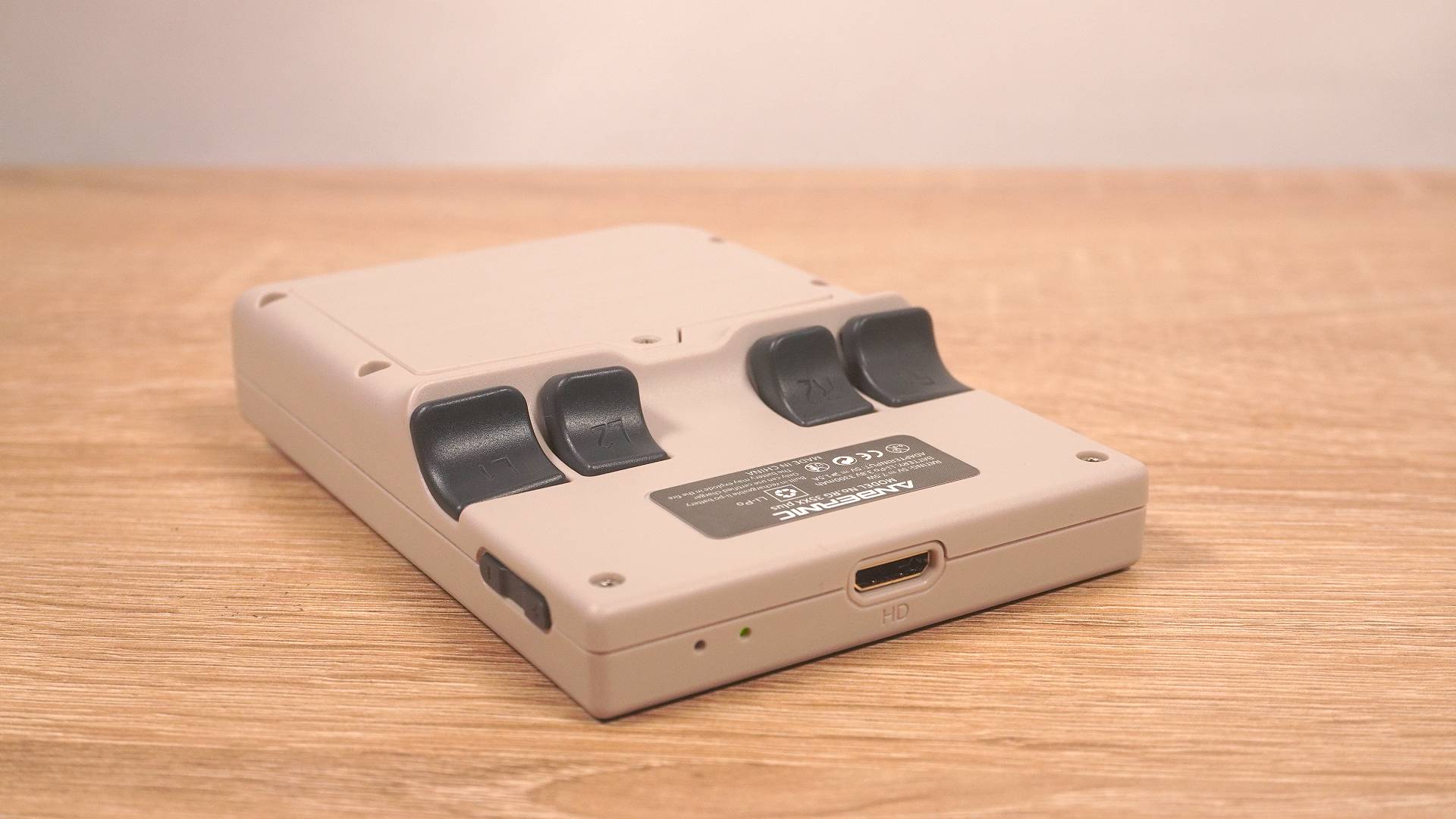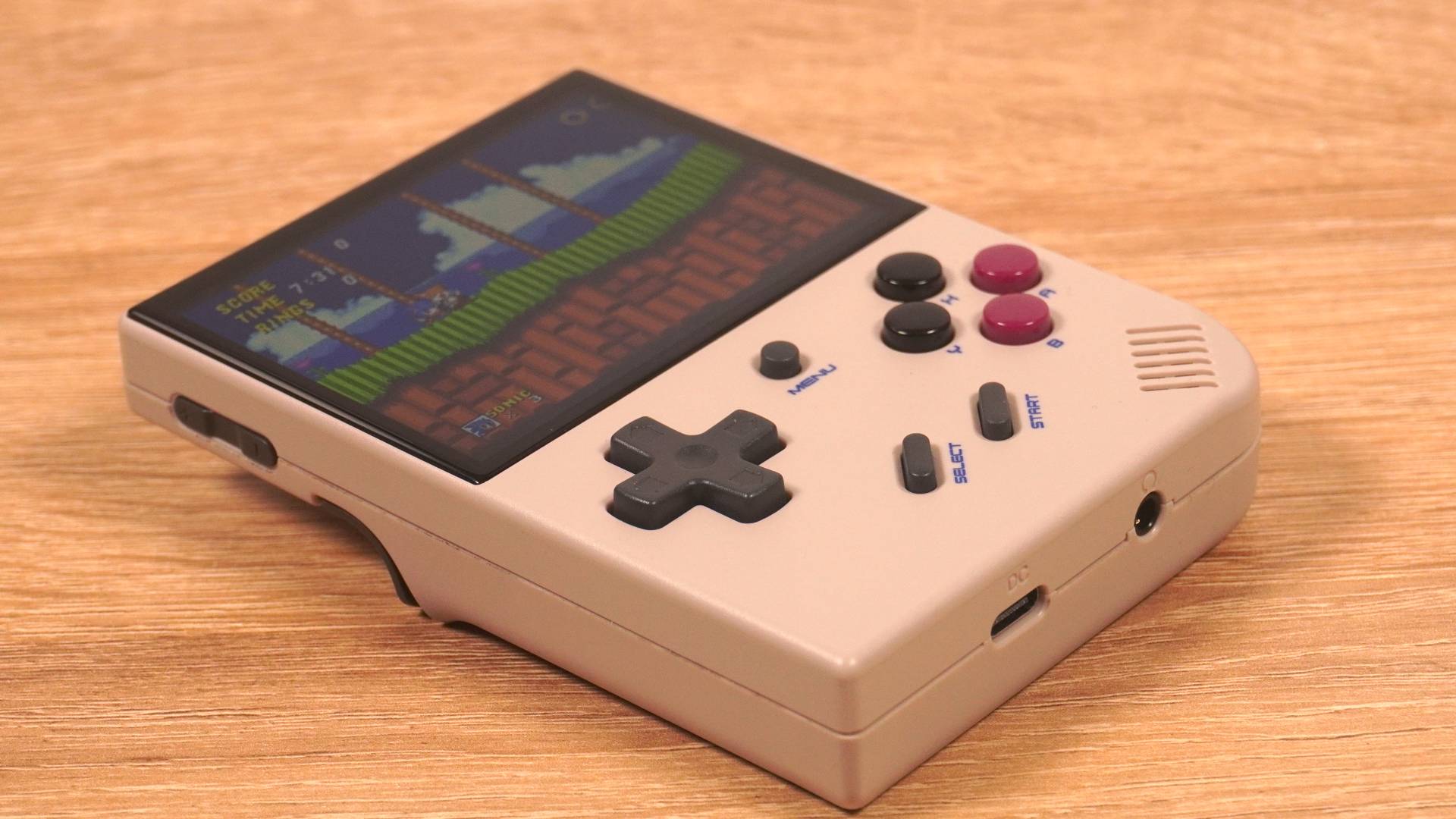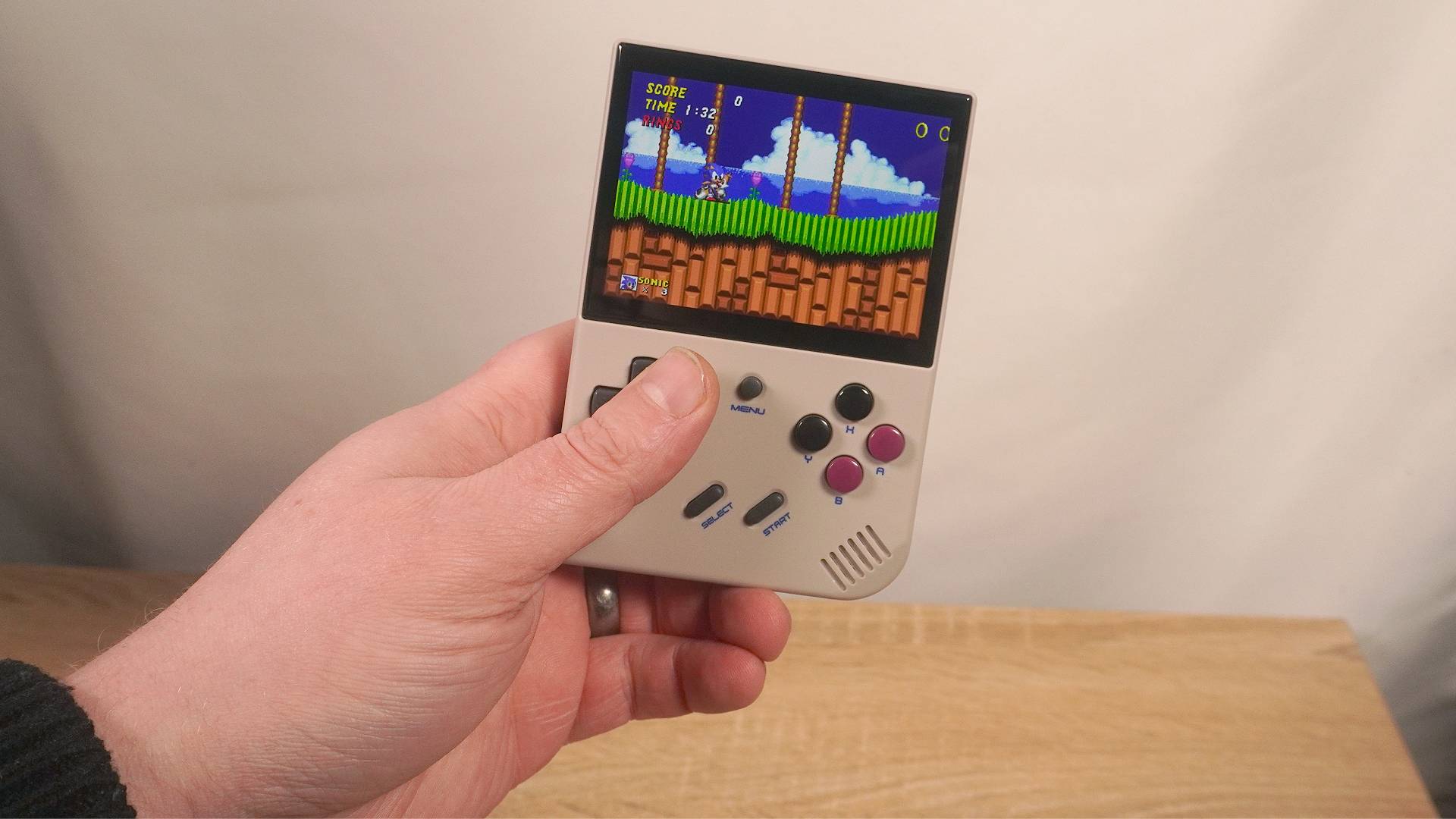GamesRadar+ Verdict
The $64 RG35XX Plus is the first of the major budget handhelds to jam PSP emulation into a pint-sized handheld. It’s imperfect in a handful of ways, but ticks all the boxes that matter, making it the go-to when it comes to budget retro gaming.
Pros
- +
Incredible value at a super low price.
- +
Plays a wider range of games than other systems in the price bracket.
- +
Is a Game Boy with a Ferrari engine.
Cons
- -
Rattly triggers that aren't comfortable.
- -
Generic operating system.
- -
Updating the system requires a PhD in patience.
Why you can trust GamesRadar+
Retro handhelds below the $100 price tag are generally hit-and-miss. You'll either get something that's killer value or a cheap toy that summons buyer's regret every time you boot it up. There is no middle ground, and even Anbernic itself has seen its fair share of turkeys.
Starting at $64, the Anbernic RG35XX Plus aims to punch hard in the best gaming handheld ring. It wants to be a superior upgrade to the very average original RG35XX model; as a clone of the Miyoo Mini Plus it wants to prove its dominance; and it wants to make the case that budget handhelds are, actually, worth picking up over their more pricey counterparts.
Anbernic isn't trying to steal attention away from the likes of Ayaneo, Valve, or Asus. This isn't a specialist boutique device. Instead, the RG35XX Plus is aimed at casual retro gamers who want a Game Boy-like device that's capable of feats no other handheld can reach in this price bracket. While the Miyoo Mini and Mini Plus are the kings when it comes to the under $100 budget devices, the RG35XX Plus manages an impressive coup that usurps the former rulers through some seriously smart tech choices.

Specs
It goes without saying, the RG35XX Plus isn't going to rival the likes of the Retroid Pocket 4 Pro anytime soon, and that's fine. This is a $64 device after all. Lower-specced tech is always going to be what powers these types of devices. In fact, it was only a few years ago that every other handheld that came out was lumped with the aging RK3326 chipset, and to Anbernic's credit, the company hasn't gone with generic tech to power the RG35XX Plus, nor has it copied Miyoo's internals.
The Miyoo Mini Plus makes use of an ARM Cortex A7 dual-core processor that caps out fairly easily. In the RG35XX Plus, Anbernic switched things up and brought in the more powerful H700 quad-core ARM Cortex-A53. Doubling the core count at a higher clock speed - 1.2Ghz vs the RG35XX's 1.5Ghz - is a minor change that's instantly noticeable for emulation and allows the RG35XX Plus to emulate systems that aren't possible on the Mini Plus.
Price: From $64 / £64
Display: 3.5-inch IPS
Resolution: 640 x 480
Refresh rate: 60Hz
CPU: Quad-core ARM Cortex-A53
RAM: 1GB LPDDR4
Connectivity: USB-C, Wi-fi 5, HDMI
Storage: 64GB TF / MicroSD
Audio: 3.5mm headphone jack
RAM comes in at 1GB of LPDDR4, and for the systems it's designed to play, is just about enough. If the RG35XX Plus were using Android as the operating system instead of Linux, sure, that wouldn't be enough. But for a fairly barebones version of Linux, it does the job and helps to keep everything feeling snappy.
The 3.5-inch IPS display comes in at a resolution of 640 x 480. It's also OCA laminated to help reduce light bleed. That resolution does mean systems that run in 16:9 will be shrunk down to fit the 4:3 ratio, but that's a worthwhile trade-off. Too many companies who plan to sell devices on 4:3 systems (think SNES, Genesis, et al) use a 16:9 ratio screen and fill the void with black bars. It's ugly as sin and thankfully isn't an issue here. Older games fit the screen effortlessly and the brightness beams just enough to highlight color accurately.

Design
Retro handhelds rarely redesign the wheel. If something works, you can almost guarantee it'll be the standard moving forward and the RG35XX Plus isn't any different. The device takes the Game Boy's vertical design and adds extra buttons in intuitive places for the most part.
Four face buttons sit on the right side of the front backed up by a d-pad to the left while start and select sit underneath near the base of the handheld. It's the same layout as the Miyoo Mini Plus, although the Anbernic device opts for thicker buttons that don't lay flat with the console. Start, select, and the menu buttons are all more pronounced, resulting in easier presses.
On the right side of the console you'll find two SD card slots - one for the main operating system and a second for any extra games - along with a reset and power buttons on the upper section. Flip the device over and the bottom houses the USB-C charging port and 3.5mm headphone jack. Spin it one final time and you'll spot an HDMI out smack bang in the middle of the top.
On the back of the RG35XX Plus is where you'll find the frankly woeful triggers. I'll admit no company has an answer for how to implement triggers on a vertical handheld (put them on the front!), but thanks to the rattly nature of Anbernic's attempt, they feel awkward to press and make too much noise. The problem arises from trying to synthesize triggers into a design they weren't originally created for, and the end result is index fingers that hit two buttons at once.
It's a shame as the overall design is solid and despite the smaller form factor, the device feels comfortable to play on. It just means you may need to spend some time remapping triggers to buttons if you're in dire need of them.

Features
Anbernic always keeps its operating systems as simple as simple can be. Press power, wait a few seconds, and you'll be welcomed by a handful of options including emulators, RetroArch, and settings. Compare it with the stylish Pimax Portal OS and Anbernic's looks drab by comparison. But then we are dealing with Linux on what is a low-spec machine, so keeping it simple - and more importantly, fast - makes sense. And there's likely the option of installing BlackSeraph's GarlicOS down the line if you do want to jazz things up.
While we're on the subject of replacing the operating system, I need to talk about the sheer pain that is updating the device. The RG35XX Plus does have Wi-Fi and Bluetooth 4.2, but any updates need to be side-loaded. How does it work? Strap in. First, you'll need to download a specific image that corresponds to your card. I should also note if you're downloading the 64GB image, that includes all the games, which is all kinds of illegal, so it's best to just use your own collection of ROMs.
After that you'll need to install 7Zip, then you'll need to rename all the file parts, then extract them in 7Zip because WinRAR doesn't work so they form a proper image, and you'll need to flash the image to the SD card, which loses all your settings and saves and takes an hour to complete. If that sounds like a lot to just install an update, it is. It also doesn't help that there aren't any instructions, so you're flying blind.
I would say to avoid updating the system given the palaver involved, but the latest image increases performance and adds a much-needed feature whereby pressing the power button in certain games switches the d-pad into a virtual analog stick. In Dreamcast and PSP games, this saving grace avoids the need to manually remap and unmap the d-pad in certain games. It's a must as far as I'm concerned. If only it wasn't a pain to install, though, eh?

Performance
The RG35XX Plus manages magic other handhelds in this price bracket simply aren't capable of. Anbernic touts PSP as being playable, and while that's true, it's not the full picture. Even after updating the system, games like God of War: Ghosts of Sparta only manage a sub-30 frames per second framerate. The fact it boots at all is impressive, but it's not anywhere near playable.
What I found with PSP emulation is it all depends on the types of games. 2D games run at near full speed without any issues, but the moment you bring highly detailed 3D worlds into the equation, problems arise. Still, I was able to play Loco Roco, Tekken 5, and Marvel Ultimate Alliance to a degree I was happy with.
For Nintendo DS and Dreamcast, a lot of titles work and work well. Dreamcast especially stuns on the 4:3 screen, and the ability to use the power button to switch to different modes on DS really helps make navigating two screens and touchscreen on a touchless screen all the easier.
Everything around or below Dreamcast, bar Saturn which isn't compatible, also works well. Although at this point, I'd be more shocked if a handheld couldn't play SNES and Genesis games to a suitable standard.

Should you buy the Anbernic RG35XX Plus?
Want a Game Boy-like device that's capable of playing old-school retro games and newer stuff like Dreamcast and some PSP? That's the hook of the RG35XX Plus. It's a device aimed at older retro gamers who want something small enough to shove in a pocket for when they're out or to play during an ad break.
For as little as $64, Anbernic has created the gold standard of budget handhelds. It's imperfect, and the sound of the shaky triggers may haunt your dreams for weeks to come, but it gets right what matters: High power, low cost. It may not be strong enough to run the full PSP library, nor can it upscale resolutions. But if you're after something that lets you play retro games on a Game Boy, with a solid screen and superb emulation selection, the RG35XX Plus is a must for collectors and newcomers alike.
How I tested the Anbernic RG35XX Plus
Over the course of a month, I played with the RG35XX Plus daily to test out multiple different emulators and a large selection of retro games that were both included and ones I own myself. The goal of this was to see how far I could push the console before games became unplayable due to poor performance. After that, I compared the device to other retro handhelds I've reviewed on other websites and YouTube to see how it compares in terms of value for money.
I also went through the convoluted update process to assess how easy it would be for the average gamer with little PC knowledge to complete (it's hard). To test the battery, I depleted it fully and recharged it regularly to check to see if there were any problematic faults (there were not, thankfully).
If you'd like to learn more about how we test handhelds and other portable systems, check out our Hardware Policy for more details.
Looking for more portable gaming options? Check out the best cheap Nintendo Switch bundles for something Mario flavored. Alternatively, swing by the best Steam Deck dock if you own Valve's portable powerhouse.

Wesley Copeland is a gaming, tech, and toys journalist with over 10 years of experience writing online. Originally starting in video games before specializing in tech and toys, you can find his by-lines at IGN, VG24/7, Kotaku, Tech Radar, GamesRadar+, PC Gamer, Heavy, and many more. He's also highly passionate about how tech can be used to better our day-to-day lives.



